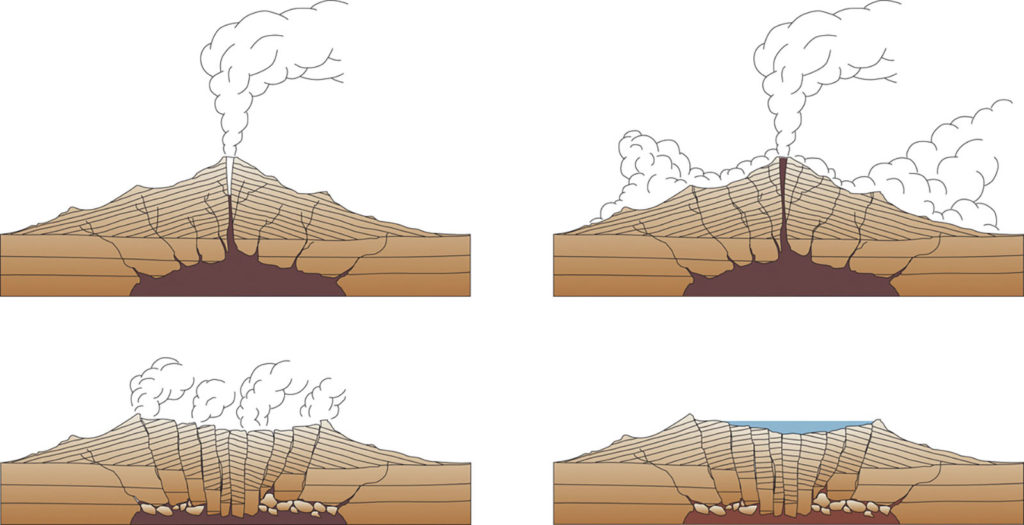In volcanology the caldera is a wide basin or depression, often occupied by a circular or elliptical lake, which is normally created after the sinking of the magmatic chamber of a volcanic structure, caused by its partial emptying following a massive eruption.

When the volcano is active again, it begins to rebuild the volcanic structure inside the caldera.
The term caldera is often confused with that of crater, which is actually the circular depression a few hundred metres in diameter, at the top of a volcanic cone. There are also rare cases of calderas of non-volcanic origin created by erosive events only. Usually calderas have a diameter of a few kilometres but there are some very large ones, of yet unknown origin, which have diameters of tens of kilometres, called supervolcanoes.